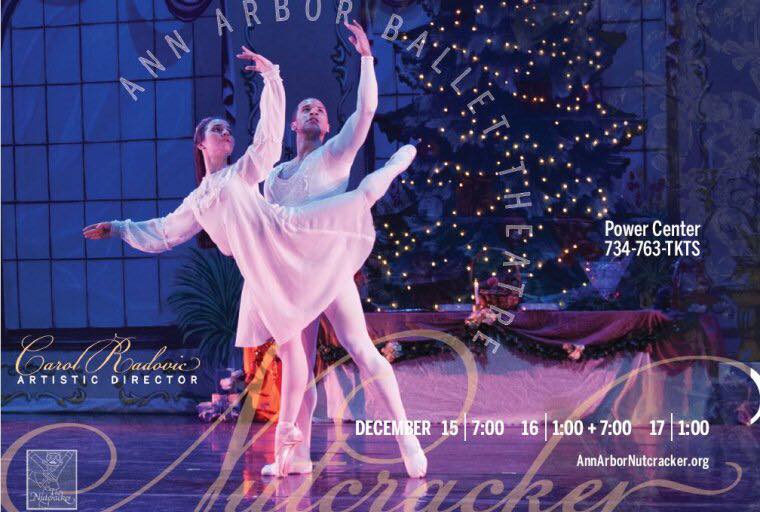It’s always rather conflicting when attempting to indulge in the holiday spirit during the everlasting finals season. Time spent seeking out the festive spirit typically leaves one in guilt for time loss from studying. However, The Nutcracker was being performed on campus so this would be exempt! There were two different groups performing The Nutcracker on campus. So, I chose to see the Ann Arbor Ballet Theatre perform at the Power Center.
The opening scene takes place in the Stahlbaum Home on Christmas Eve. From the beginning, I noted that the acoustics could have been better given that they would need to compensate for not having a live orchestra pit. However during Act I, Scene I, I undoubtedly still felt the Christmas festivity transcending from an evening spent with gifts, sweets, and dancing around the Christmas tree. Unaware of the Ann Arbor Ballet Theatre and all of its members, I was utterly pleased to see so many young performers on stage. From ages perhaps as low as five years old to older teens, it was a sight to see so many young performers expressing themselves through theatre and dance.
Act I, Scene III, The Land of Snow, was a guaranteed crowd-pleaser. To my surprise, they had fake snow falling onto the stage! From the snowflake-like blue lighting and background to the complementing snow fairy outfits and dances, this scene was aesthetically pleasing and beautifully accompanied by Tchaikovsky’s “Scene in the Pine Forest” and “Waltz of the Snowflakes.”
Act II: The Kingdom of Sweets, carries the bulk of the story and most rousing parts. During this, Clara and her newly gifted nutcracker arrive at his Palace high atop Sugar Mountain in the Kingdom of Sweets. (How could we not be the least bit of enlivened by a scene held in a place called The Kingdom of Sweets?) This scene is composed of several intensive and rather intimate waltzes that represent various ethnicities. To begin is Chocolate: a high-spirited Spanish dance. Next is the Arabian Coffee, a sultry, languid dance. Arguably, the most detailed and personal dances of them all with slow, thoughtful movements in sync with their partner. Coffee was the most expressive dance where the audience had the chance to analyze each intentional movement according to the music. In all fairness though, Coffee is the lengthiest and has the slowest tempo of all six dances, so this impression may be biased. Following Coffee was a much more upbeat, high-pitched lively and athletic Chinese inspired dance called Tea. To trump Tea’s lively nature, Trepak outperforms its predecessor with a much faster-paced beat in light of a Russian folk dance that is filled with bravura. To close out the divertissements, we are left with Marzipan, which in contrast, is a pas-de-trois, performed by three people — all followed by an appearance by Mother Ginger and her beloved Sugar Plums.
The curtains begin to close as Clara’s wondrous dream begins to fade while she finds herself back at home with only memories of a magical night. Upon the curtains closing, we are left with a matched feeling in comparison to the characters as we have followed along on their adventurous journey overnight and also come to a silent, peaceful close. Even in a wicked time known as “Finals Season,” time should be allotted for the holiday classic, The Nutcracker.


